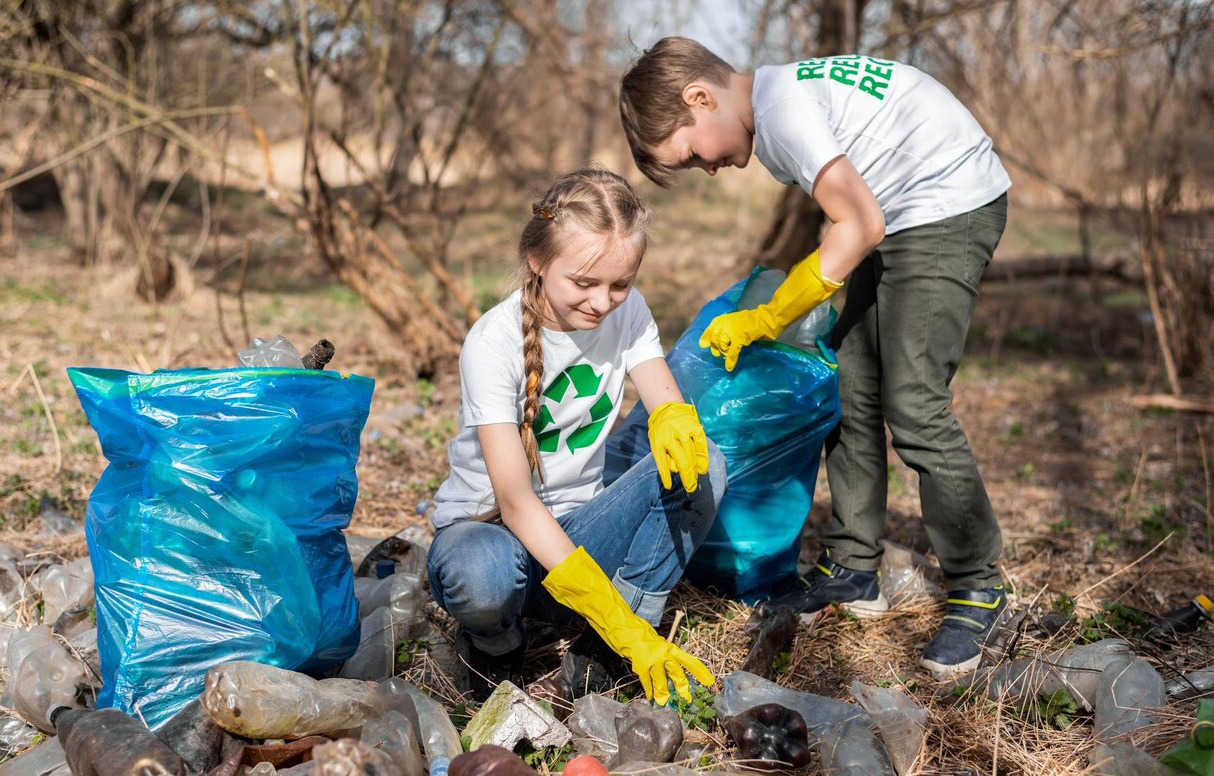Parenting with Purpose: How to Foster Eco-Consciousness in Children
Fostering eco-consciousness in the next generation is important. Eco-consciousness refers to understanding how our actions affect the environment and committing to making sustainable choices.
Sparking a love for the environment in children can be an exciting journey, but navigating resistance along the way is a normal part of the process.
By using the right strategies and building your understanding, you can turn your child's initial resistance into a path for them to discover their passion for protecting the planet.
Highlighting important facts, such as how marine phytoplankton contribute significantly to global oxygen production. Illustrate the important role of ecosystems and the significance of environmental protection.
The goal is not to force eco-consciousness on your child but to foster a genuine understanding and interest in protecting the environment. Change takes time.
Be patient with your child’s progress and consistently reinforce the importance of eco-conscious behaviors.
Table of Contents
Teaching Eco-Friendly Behavior
Reading Books for Toddlers and Preschoolers
Environmental Programs for Elementary School Children
Practical Activities and Lessons
Empowering Teenagers in Environmental Conservation
Incorporating Eco-Consciousness into Daily Routines
Setting Eco-Consciousness Goals as a Family
Step 1: Assess Your Current Habits
Step 2: Set Realistic and Specific Goals
Step 3: Make It Fun and Educational
Step 4: Monitor Progress and Celebrate Achievements
Volunteering with Environmental Organizations
Further Reading: Practicing Education for Sustainable Development
Teaching Eco-Friendly Behavior
According to Naturpac, environmental education is essential for children as it builds a foundation for lifelong environmental stewardship and sustainable living.
Emphasizing practical approaches, such as engaging in nature, recycling, composting, using eco-friendly transport, gardening, and community projects, it equips children with the knowledge and habits necessary to make environmentally responsible decisions.
Here are some ways to teach eco-friendly behavior according to your children's age:
Reading Books for Toddlers and Preschoolers
Introducing eco-consciousness to infants and toddlers might seem premature, but it's an ideal time to start cultivating eco-friendly habits. Even at a young age, children can be involved in simple, environmentally friendly activities that can help instill lifelong sustainable practices.
Books are a wonderful tool to introduce young children to the concept of environmental stewardship. Here are a few captivating titles that can help plant the seeds of eco-consciousness in your little ones:
 | The Lorax Dr. Seuss's "The Lorax" tells the story of the Lorax, who speaks for the trees against the Once-ler's environmental destruction, teaching the importance of conservation and caring for the planet. |
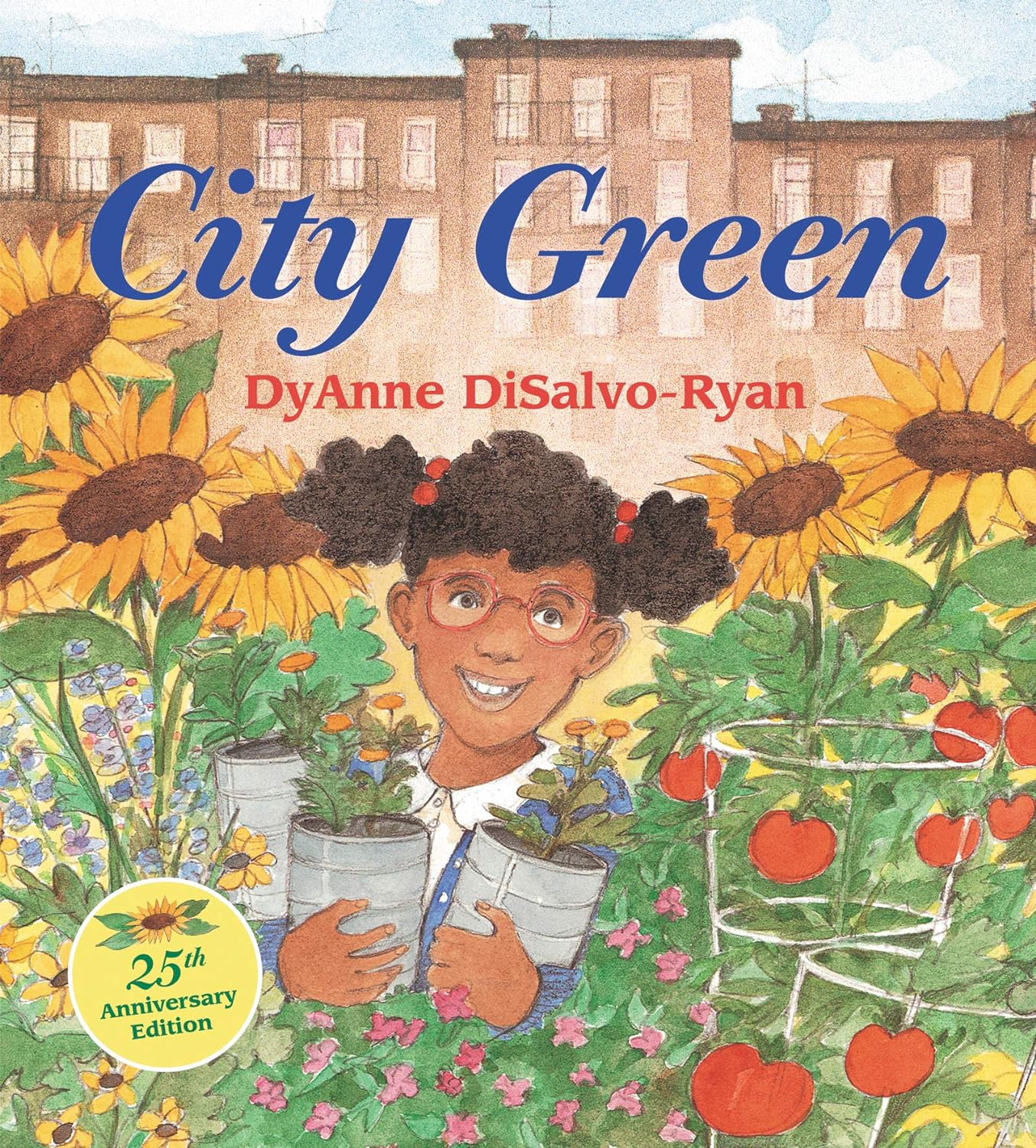 | City Green In DyAnne DiSalvo-Ryan's "City Green," young Macy transforms a vacant city lot into a vibrant community garden, illustrating the power of collective action and urban greening. |
 | Compost Stew: An A to Z Recipe for the Earth Mary McKenna Siddals’ A to Z guide to composting teaches children sustainable waste management. |
 | The Earth Book Todd Parr’s "The Earth Book" uses playful illustrations to teach children simple, practical ways to protect the planet, such as recycling and saving energy, fostering an early sense of environmental responsibility. |
 | The Lonely Polar Bear Khoa Le’s beautifully illustrated tale follows a small polar bear facing the impacts of climate change, highlighting the effects of global warming on Arctic wildlife. |
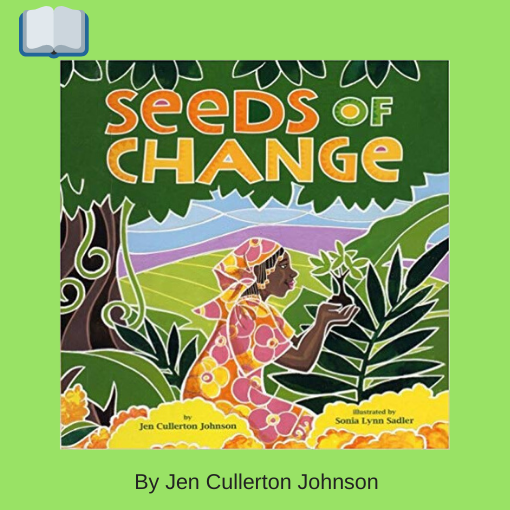 | Seeds of Change This inspiring biography tells the story of Wangari Maathai, the first African woman to win the Nobel Peace Prize, highlighting her efforts in environmental conservation and women's rights. |
Environmental Programs for Elementary School Children
In recent years, there has been an increasing emphasis on environmental education in Lithuania and the European Union. Introducing children to environmental issues at an early age encourages them to actively engage in related activities and involve their friends and family.
This early exposure, coupled with a focus on environmental protection in schools, helps foster the development of environmentally conscious citizens.
Practical Activities and Lessons
- Recycling Programs: Teach children how to sort recyclables and understand the recycling process.
- Composting: Introduce composting to reduce waste and create nutrient-rich soil for gardening projects.
- Water and Energy Conservation: Encourage simple habits like turning off lights when not in use and fixing leaky faucets.
Elementary school children are particularly receptive to understanding eco-consciousness. School curriculums often include basic environmental education, which can be further reinforced at home.
Gardening at home can illustrate the life cycle of plants, the importance of composting, and the role of insects in pollination. This period is ideal for instilling lifelong eco-conscious values and habits in children.
Empowering Teenagers in Environmental Conservation
Encouraging teens to participate in activities like tree planting, beach cleanups, and policy advocacy can make a tangible difference. Social media platforms can serve as powerful tools to organize and promote these activities, reaching a broader audience and fostering a community of environmentally conscious individuals.
However, for these efforts to be truly impactful, students must be able to discern credible information from misinformation.
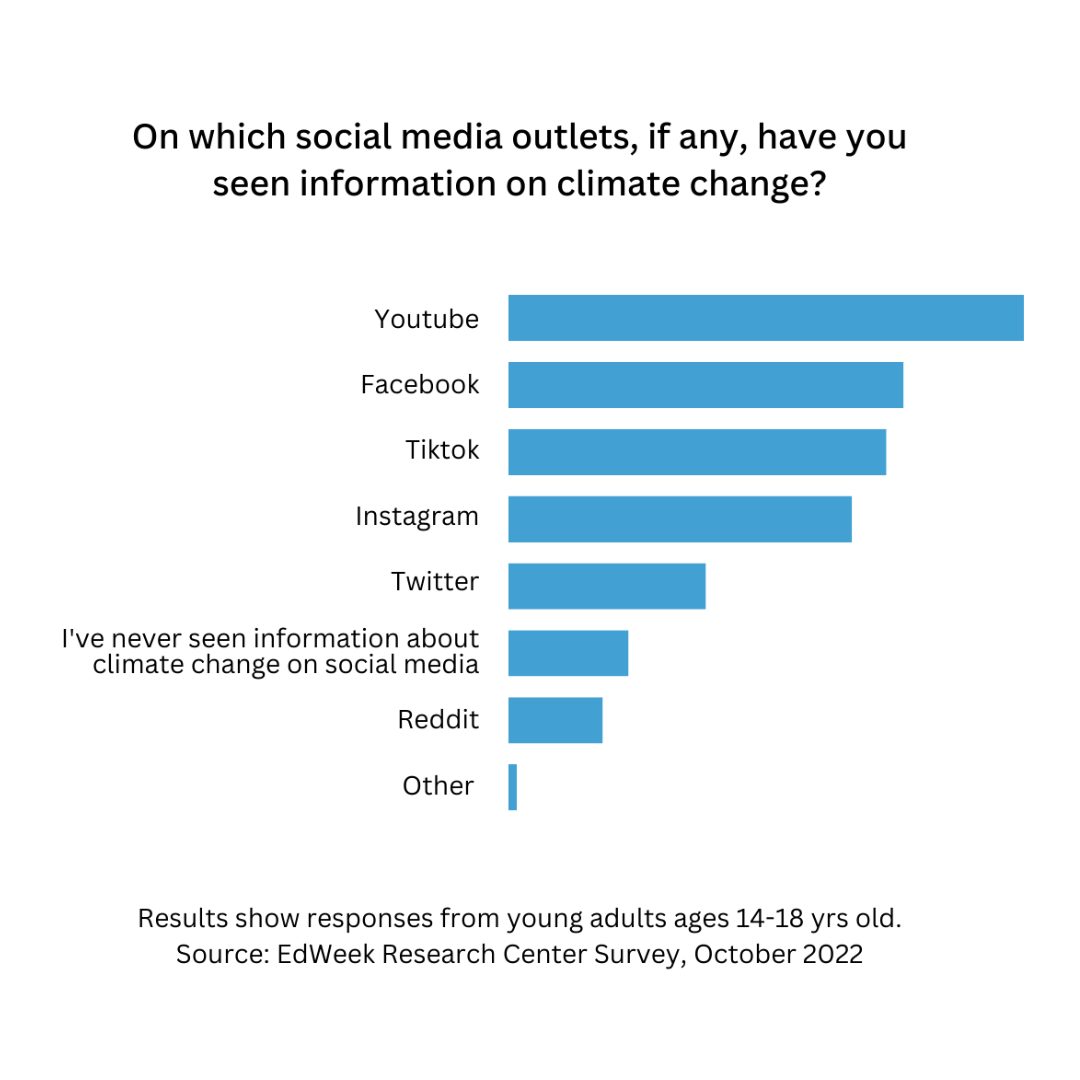
Implementing the Social Media for Environmental Awareness (SMENA) model, as proposed by Tlebere, Scholtz, and Calitz, can further support these initiatives.
This model emphasizes structured social media campaigns that increase environmental knowledge and awareness through phases of engagement and education, leveraging popular platforms like Twitter and Facebook.
Incorporating Eco-Consciousness into Daily Routines
Embedding eco-friendly habits into daily routines is important for fostering a sustainable mindset. One of the best ways to incorporate eco-friendly habits is by encouraging sustainable commuting, such as walking or cycling to school.
This practice reduces carbon emissions and promotes physical exercise.
Physical and Health Benefits
Engaging in active commuting, such as walking or cycling to school, significantly increases physical activity in children, leading to a multitude of health benefits.
For instance, children who walk or bike to school are much more likely to meet daily physical activity recommendations compared to those who commute by car. This increased level of activity supports physical health and promotes better mental and cognitive functions.
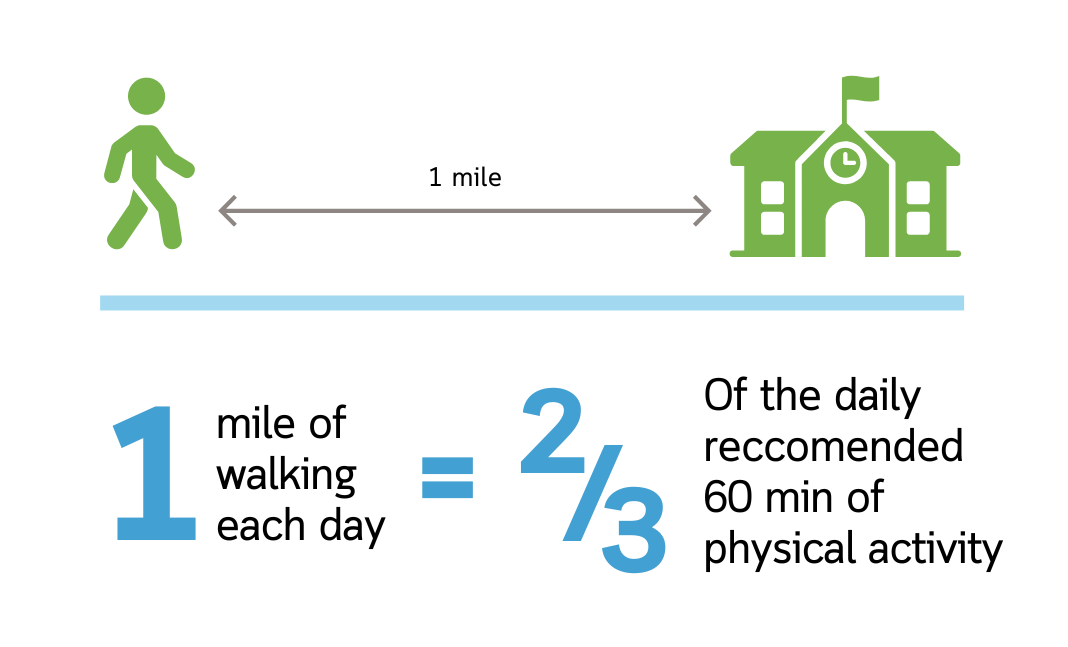
To illustrate the diverse benefits of physical activity through active commuting, here is a table detailing the specific advantages:
| Benefit | Description |
| Weight Management | Helps maintain a healthy weight and prevents obesity |
| Cardiovascular Health | Improves heart health and reduces the risk of cardiovascular diseases |
| Mental Health | Reduces symptoms of anxiety and depression, promoting overall mental well-being |
| Academic Performance | Enhances focus, memory, and academic achievement in school |
| Bone and Muscle Strength | Promotes the development of strong bones and muscles |
| Mood Enhancement | Boosts mood and reduces stress levels |
| Cognitive Function | Supports brain function and enhances learning capabilities |
By encouraging children to walk or bike to school, we can foster a healthier, more active lifestyle that offers extensive benefits beyond physical fitness, positively influencing their mental, emotional, and academic development.
Environmental Impact
Encouraging walking and cycling reduces the number of car trips, leading to lower traffic congestion and reduced air pollution.
Walking and cycling help decrease carbon emissions and improve air quality around schools, creating a healthier environment for all students.
In addition to promoting active transportation, there are other simple, impactful ways to incorporate eco-consciousness into daily routines.
- Pack waste-free lunches using reusable containers and refillable water bottles to minimize plastic waste.
- In the evening, encourage taking short showers to conserve water and using energy-efficient light bulbs.
- Purchasing fruits and vegetables from local farmers' markets reduces the carbon footprint associated with transporting food over long distances and supports sustainable agriculture.
These small changes collectively contribute to a more sustainable lifestyle and help reduce our environmental footprint.
Setting Eco-Consciousness Goals as a Family
Spend time as a family researching and discussing environmental issues such as climate change, pollution, and biodiversity loss. Understanding the ‘why’ behind your actions will help keep everyone motivated and committed.
Step 1: Assess Your Current Habits
According to the Global Footprint Network, as of 2023, humanity demands 20.8 billion global hectares to renew goods and services, surpassing 12.2 billion global hectares of biocapacity. This excessive demand means we use resources equivalent to 1.7 Earths.

Ecologists say we must cut our demand below half of Earth's biocapacity to protect biodiversity and stabilize the climate.
Begin by evaluating your family’s current environmental footprint. Create a simple audit to track aspects like:
- Energy Usage: Track electricity and water consumption to identify high-usage areas.
- Waste Production: Monitor garbage and recycling habits to reduce waste.
- Transportation: Compare cars versus public transport or biking to reduce carbon emissions.
- Food Choices: Assess the consumption of local and organic produce versus meat to lower your footprint.
Involve everyone in this assessment to ensure a comprehensive understanding of your starting point.
Step 2: Set Realistic and Specific Goals
Once you have a clear picture of your current habits, set specific, measurable, achievable, relevant, and time-bound (SMART) goals. For example:
- Reduce household energy consumption by 20% within six months by implementing energy-saving practices.
- Cut down waste by 30% over the next year through composting and reducing single-use plastics.
- Shift to a plant-based meal at least three times a week to lower your carbon footprint.
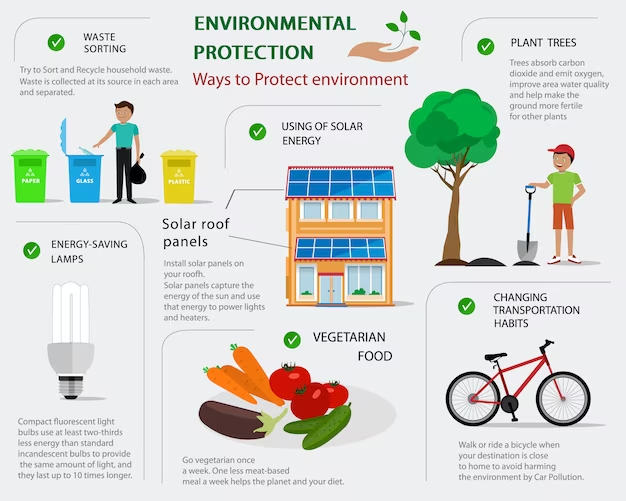
Each goal should have a clear plan and timeline. Assign responsibilities to different family members to encourage active participation.
Develop a detailed action plan for achieving each goal. Break down the steps required and allocate tasks. For instance, if your goal is to reduce energy consumption, your action plan might include:
- Conducting a home energy audit
- Switching to LED light bulbs
- Installing a programmable thermostat
- Establishing a routine for turning off lights and unplugging devices when not in use
- Use a friendly poster to remind each family member

Ensure the action plan is visible to everyone, perhaps on a family bulletin board or a shared digital platform, to keep track of progress and make adjustments as needed.
Step 3: Make It Fun and Educational
Encourage teamwork and problem-solving through collaborative projects. Utilize resources like printable worksheets, writing prompts, and themed art activities to make the learning process dynamic and impactful.
Enhance your Earth Day activities by making them both enjoyable and instructive. Incorporate a mix of engaging lessons, hands-on projects, and creative art tasks.
“The ultimate test of man's conscience may be his willingness to sacrifice something today for future generations whose words of thanks will not be heard.”
—Gaylord Nelson (1916-2005), former governor of Wisconsin, founder of Earth Day
Make learning fun! Engage children with crosswords featuring endangered animals and interactive Earth Day poster creation.
Step 4: Monitor Progress and Celebrate Achievements
Regularly review your goals and monitor progress. Hold family meetings to discuss what’s working, what’s not, and how to overcome any challenges.
Celebrate your achievements, no matter how small, to maintain motivation. This could be as simple as a special family dinner featuring home-grown produce or a day out at a favorite eco-friendly spot.
Eco-conscious living is a continuous journey, not a one-time project. Reflect on your goals periodically and be willing to adapt as necessary.
As your family becomes more knowledgeable and experienced, you can set more ambitious goals and explore new areas of sustainability.
Community Involvement
Engaging children in community activities can deepen their understanding of eco-consciousness and build a sense of collective responsibility.
Participating in local environmental initiatives teaches children about sustainability and instills a sense of pride and ownership in their community.
Local Clean-Up Events
Join local clean-up events in parks, beaches, or neighborhoods. These activities help children see the immediate impact of their efforts and understand the importance of maintaining clean and healthy surroundings. Encourage them to invite friends and make it a fun group activity.
Incorporate elements from the "Mera Planet, Mera Ghar" initiative by Sesame Workshop India. Conduct surveys to gather children’s environmental concerns and provide a platform for them to voice these concerns to local stakeholders.
This approach, which enables cross-generational exchanges of ideas, expectations, and solutions to environmental issues, can significantly enhance children's engagement.
In 2019, air pollution was a leading risk factor for deaths in India, accounting for nearly 18% of all deaths, with 18% of these being children under five.
Engaging local political stakeholders can amplify their voices and lead to tangible policy changes, fostering a sense of responsibility and empowerment among the young participants.
Community Gardens
Participating in a community garden offers valuable lessons for children about the benefits of growing their food, composting organic waste, reducing food miles by sourcing locally, and embracing sustainable agriculture practices.
These gardens often provide educational programs tailored for children, enriching their understanding of nutrition and fostering a deeper connection to the food they consume.
Additionally, studies have shown that involvement in community gardens can significantly improve dietary habits, with adults being 3.5 times more likely to consume the recommended daily servings of fruits and vegetables.
Engaging in gardening activities children learn practical skills and contribute to building healthier communities.
Environmental Clubs
Encourage your child to join or form an environmental club at their school or community. These clubs can organize various activities, such as recycling drives, awareness campaigns, and educational workshops.
Being part of a group with similar interests can motivate children to take more significant actions toward sustainability.
Volunteering with Environmental Organizations
Many environmental organizations offer volunteer opportunities for families. Activities such as tree planting, wildlife conservation projects, and energy conservation programs can provide hands-on learning experiences for children.
Volunteering helps children understand broader environmental issues and see how their actions can contribute to larger goals.
Case Study: Go Green
Green School Program
A case study from Arny Marcus (2012) examines the implementation of the Green Schoolprogram in Israeli elementary schools to enhance students' environmental literacy.
The study involved 146 sixth graders from six classes across control, green, and diligent green schools, using both quantitative (questionnaires) and qualitative (interviews) methods.
Findings revealed that while system knowledge was similar across schools, green school students demonstrated more creative problem-solving skills and a broader awareness of environmental issues.
The graphic illustrates the total mean score for various information sources contributing to environmental knowledge, highlighting the relative influence of each source:

Additionally, these students were more involved in pro-environmental projects and relied heavily on their schools and teachers for environmental information.
The study concludes that the Green School program effectively promotes pro-environmental behavior and responsible citizenship, highlighting the need for integrating such programs into school curriculums to foster environmental literacy and community involvement.
Green Flag
Another case study from Scoil Íosa National School highlights the success of earning the Green Flag for Litter and Waste in 2020.
The school reduced waste by 20% and implemented various environmental actions, including forming a Green Schools committee, conducting environmental reviews, creating action plans, and engaging in community involvement.
Key initiatives included waste audits, recycling education, and reducing single-use plastics. The program also integrated environmental themes into the curriculum and actively involved parents and students in promoting sustainability.
Further Reading: Practicing Education for Sustainable Development
For educators interested in deepening their understanding of Education for Sustainable Development (ESD), the "Practicing Education for Sustainable Development: Case Study Guide for Educators" by the Global Schools Program offers invaluable insights.
Produced by the UN Sustainable Development Solutions Network (SDSN), the guide features case studies that highlight innovative teaching methods, school-wide activities, and community engagement strategies that promote sustainability.
It is designed to help educators develop the knowledge, skills, and attitudes necessary to foster a sustainable future for their students.
Frequently Asked Questions
What are some simple, everyday practices to reduce our family's carbon footprint?
Some simple practices include using reusable bags and containers, reducing water usage by taking shorter showers, walking or biking instead of driving short distances, and choosing locally sourced food.
Involve your child in these activities to help them understand their impact on the environment.
At what age should I start talking to my child about climate change?
It's beneficial to start discussions about climate change when your child begins to ask questions about the world around them, usually around the ages of 5-7.
Tailor the complexity of your explanations to their age and understanding, and focus on positive actions they can take.
How can I explain the concept of carbon footprint to my children in a way they can understand?
Use simple language and visual aids to explain the concept of a carbon footprint. For example, you can compare it to leaving a trail of footprints wherever you go, but instead of footprints, it's the impact your actions have on the environment.
Show them examples of activities with high and low carbon footprints and discuss ways to reduce their own.
What are some easy, everyday practices for reducing waste at home that children can help with?
Simple practices include using reusable containers for snacks and lunches, avoiding single-use plastics, and sorting recyclables correctly. Children can also help by making homemade cleaning products, participating in composting, and using cloth instead of paper towels.
How can I teach my children about the impact of their diet on the environment?
Involve your children in meal planning and grocery shopping, emphasizing the importance of choosing local, organic, and plant-based foods.
Explain the environmental impact of meat production and encourage them to try meatless meals. Cooking together can also be a great way to discuss these topics.
How can I involve my child in eco-friendly activities if we live in an urban area with limited green spaces?
Living in an urban area can still provide many opportunities for eco-friendly activities. You can start a small indoor herb garden, participate in community clean-up events, or visit local parks and botanical gardens. Additionally, consider activities like recycling, reducing water and energy usage at home, and supporting urban farms or community gardens.
What are some eco-friendly household item alternatives for teaching sustainability?
Introduce eco-friendly alternatives like bamboo toothbrushes, reusable shopping bags, stainless steel water bottles, cloth napkins, and beeswax wraps instead of plastic wrap. Show your children how these alternatives reduce waste and can be part of their daily routine.
Summary
In conclusion, fostering eco-consciousness in children is a multifaceted process that requires consistent effort, creativity, and patience.
It involves educating them about the importance of environmental conservation, integrating eco-friendly habits into their daily routines, and modeling eco-conscious behavior.
Empowering the next generation with knowledge of environmental issues equips them to become the architects of a sustainable future.
References
(n.d.). Wikipedia. Retrieved June 3, 2024, from https://oceanexplorer.noaa.gov/facts/oceanproduction.html
(n.d.). Wikipedia. Retrieved June 3, 2024, from https://www.oursafetynet.org/2020/03/12/why-is-nature-so-important-for-humans/
(n.d.). Wikipedia, the free encyclopedia. Retrieved June 3, 2024, from https://naturpac.org/news/why-is-environmental-education-so-important-to-children/
(n.d.). Wikipedia, the free encyclopedia. Retrieved June 3, 2024, from https://www.environment911.org/8-Inspiring-Childrens-Books-about-the-Environment
(n.d.). Wikipedia. Retrieved June 3, 2024, from https://en.wikipedia.org/wiki/The_Lorax
(n.d.). Wikipedia. Retrieved June 3, 2024, from https://www.insideoutclub.org/product/compost-stew-by-mary-mckenna-siddals/
(n.d.). Wikipedia. Retrieved June 3, 2024, from https://www.salisbury.edu/news/article/Green-Earth-Author-Todd-Parr-Visits-Salisbury
(n.d.). Wikipedia. Retrieved June 3, 2024, from https://www.insideoutclub.org/product/the-lonely-polar-bear-by-khoa-le/
(n.d.). Wikipedia, the free encyclopedia. Retrieved June 3, 2024, from https://www.insideoutclub.org/product/seeds-of-change-by-jen-cullerton-johnson/
(n.d.). Wikipedia. Retrieved June 3, 2024, from https://organismalbio.biosci.gatech.edu/growth-and-reproduction/plant-reproduction/
(n.d.). Wikipedia. Retrieved June 3, 2024, from https://www.edweek.org/technology/most-teens-learn-about-climate-change-from-social-media-why-schools-should-care/2023/01
(n.d.). Wikipedia. Retrieved June 3, 2024, from https://www.saferoutespartnership.org/safe-routes-school/101/benefits
(n.d.). Wikipedia. Retrieved June 3, 2024, from https://www.hsph.harvard.edu/obesity-prevention-source/obesity-prevention/schools/school-obesity-prevention-recommendations-read-and-print/
(n.d.). Wikipedia. Retrieved June 3, 2024, from https://www.utoronto.ca/news/why-walking-school-better-driving-your-kids
(n.d.). Wikipedia. Retrieved June 3, 2024, from https://www.sustrans.org.uk/our-blog/get-active/2020/in-your-community/how-does-walking-and-cycling-help-to-protect-the-environment
(n.d.). Wikipedia. Retrieved June 3, 2024, from https://pubmed.ncbi.nlm.nih.gov/23237340/
(n.d.). Wikipedia. Retrieved June 3, 2024, from https://subjecttoclimate.org/external-resources/crossword-on-endangered-animals
(n.d.). Wikipedia. Retrieved June 3, 2024, from https://www.science.org/doi/10.1126/sciadv.1700782
(n.d.). Wikipedia. Retrieved June 3, 2024, from https://www.cleanairfund.org/case-study/children-voice-delhi/
(n.d.). Wikipedia. Retrieved June 3, 2024, from https://www.cleanairfund.org/news-item/empowering-children/
(n.d.). Wikipedia. Retrieved June 3, 2024, from https://foodcommunitybenefit.noharm.org/resources/implementation-strategy/program-community-gardens-and-farms
(n.d.). Wikipedia. Retrieved June 3, 2024, from https://www.universityofcalifornia.edu/news/83-billion-metric-tons-plastic-and-counting
(n.d.). Wikipedia. Retrieved June 3, 2024, from https://technicalgeography.org/pdf/2_2012/06_arny_marcus_implementation_of_environmental_education_case_study_activating_the_green_school_program_among_elementary.pdf
(n.d.). Wikipedia. Retrieved June 3, 2024, from https://files.unsdsn.org/Global%20Schools%20Case-Study%20Guide_Standard.pdf
(n.d.). Wikipedia. Retrieved June 3, 2024, from https://www.unsdsn.org/resources/
(n.d.). Wikipedia. Retrieved June 3, 2024, from https://www.epa.gov/history/quotations-about-environment
(n.d.). Wikipedia. Retrieved June 3, 2024, from https://youtu.be/GjyTWrnTCw0?si=qW5RPcKJhdKv015T
DyAnne DiSalvo. (n.d.). Wikipedia. Retrieved June 3, 2024, from https://en.wikipedia.org/wiki/DyAnne_DiSalvo
ENVIRONMENTAL EDUCATION IN PRIMARY SCHOOL: MEANING, THEMES AND VISION. (2023, May 15). ERIC. Retrieved June 3, 2024, from https://files.eric.ed.gov/fulltext/ED629147.pdf
Scoil Íosa, Tallaght. (n.d.). Green-Schools. Retrieved June 3, 2024, from https://greenschoolsireland.org/case-studies/scoil-iosa-tallaght/
What the Ecological Footprint measures. (n.d.). Global Footprint Network. Retrieved June 3, 2024, from https://www.footprintnetwork.org/what-ecological-footprints-measure/
Why Walk, Bike or Roll? : Walk & Bike to School. (n.d.). Bike to School Day. Retrieved June 3, 2024, from https://www.walkbiketoschool.org/learn-more/why-walkbike/



